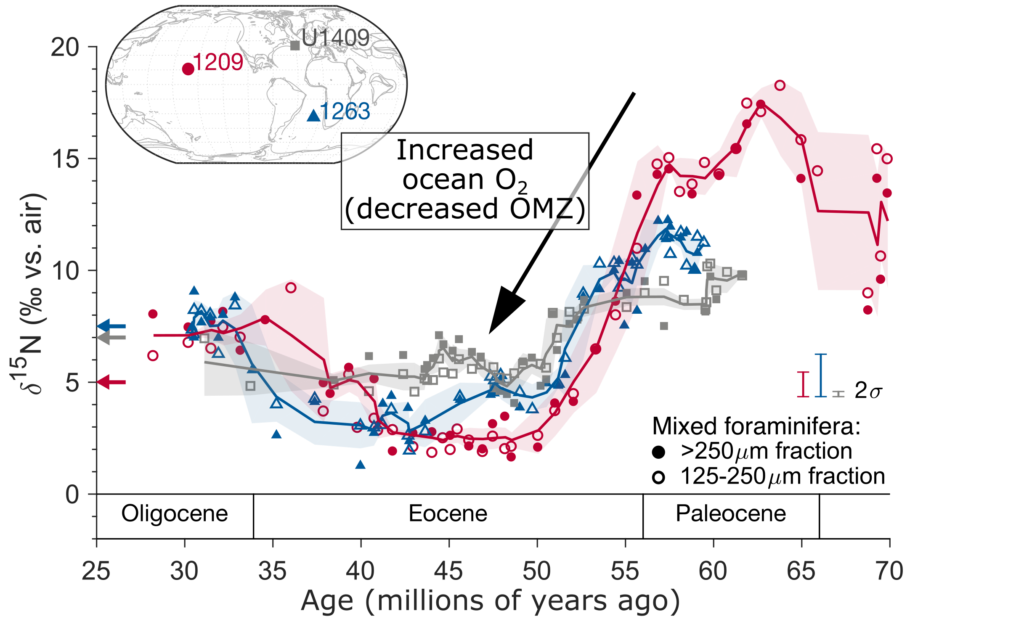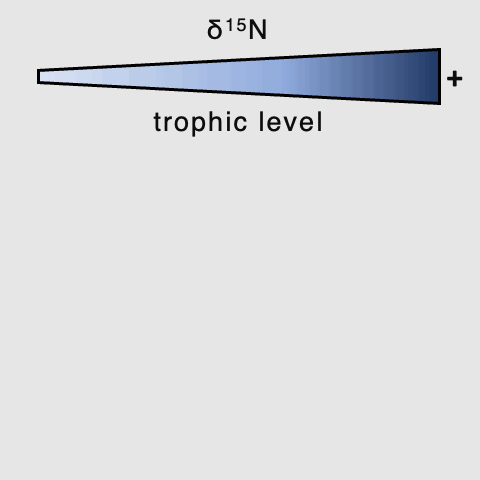Research Interests
Check Google Scholar for a full list of my publications
Cenozoic marine biogeochemistry
How does the ocean nitrogen cycle change on million-year timescales, and what are the connections to ocean oxygen and Earth’s climate? Our work on this topic revealed that an increase in ocean oxygen occurred at a time of global warming leading up to the early Eocene Climate Optimum.

Paleoecology
What is the trophic ecology of ancient organisms?
We studied the diets of megatooth sharks, a group of extinct sharks that culminated with the giant megalodon. To do so we measured the δ15N of fossil shark tooth enameloid to reconstruct the trophic level of these ancient sharks. The megalodon was feeding at a trophic level unmatched in the modern ocean!


Trophic ecology of megatooth sharks through the Cenozoic. From Kast et al. “Cenozoic megatooth sharks occupied extremely high trophic positions” Science Advances, 2022. © 2021 Christina Spence Morgan.
Mineral-bound δ15N proxies
Can we better understand and ground-truth mineral-bound δ15N proxies? What are the best methods for accurately measuring the δ15N of mineral-bound organic matter?
One example of this work is modern ground-truthing of the shark enameloid-bound organic matter δ15N, where we directly compared the enameloid-bound δ15N to collagen δ15N measured on the same teeth. We found these values are correlated, indicating that enameloid-bound δ15N does record overall changes in tissue δ15N. We identified an approximately 1.5‰ offset between enameloid-bound and collagen δ15N.

Comparison between shark enameloid-bound organic matter δ15N and dentin collagen δ15N from the same modern sand tiger teeth. From Kast et al. “Cenozoic megatooth sharks occupied extremely high trophic positions” Science Advances, 2022.